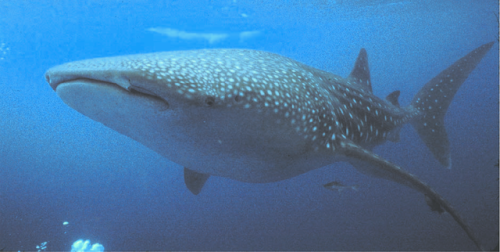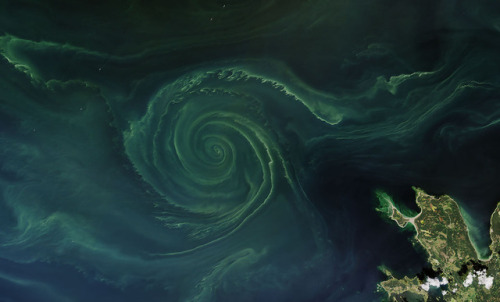IMG_5130
IMG_5130
More Posts from Simplyphytoplankton and Others

Lakes and rivers of Antarctica

FROM PANAMA TO MARIANA TRENCH: FEMALE WHALE SHARK MADE A RECORD!
For two and a half years, scientists followed the movements of Anne, a whale shark, during which she swam from the coast of Central America to the Mariana Trench.
In 2011, researchers put a transmitter on Anne near Coiba Island in Panama. In the following 841 days, Anne’s transmitter sent a signal to the ARGOS satellite when it swam close to the surface. These trasmitter allowed the team to follow its movements to the south to the Galapagos Islands and throughout the Pacific to the Mariana Trench, to the south of Japan and the east of the Philippines. She traveled a distance of 20142 kilometers.

-Whale shark route from Panama to the Mariana Islands (black track) tagged in September 2011, and old record from Mexico to the Marshall Islands (red track, tagged in September 1995).
The finding reinforces the position of the whale shark as one of the animals that travels most, along with leatherback turtle, gray whale and the arctic tern. In 2016, the IUCN cataloged the species for the first time as threatened. Biologists calculate that tropical and subtropical seas have less than half of whale sharks that they had 75 years ago, which increases the urgency of their protection.
Read also: This is why whale shark aggregate just in 20 sites!
Photo: A whale shark at Gladden Spit, Belize. Source Heyman et al.,2001.
Reference (Open Access): Guzman et al., 2018. Longest recorded trans-Pacific migration of a whale shark (Rhincodon typus). Marine Records

From walking around Lake Louise, Alberta.
Sky Walk on Puente 3 (Bridge 3) in Monteverde, Costa Rica
Alone in the world is a little catshark 🦈
This is one of the three deep-sea catshark species found in the Northeast Pacific, the longnose catshark, Apristurus kampae. They are found at depths ranging from 180 to 1,888 meters (590 to 6,500).
Catsharks are bottom feeders and are most active at night, often sleeping in groups during the day and hunting at night.

As it is Halloween here’s a still unsolved natural mystery.
Located in Judge C.R. Magney State Park, Minnesota, there is an unsolved geological mystery nicknamed The Devil’s Kettle. Mid way along the Brule River that runs through the Park the river splits in two to go around an outcrop of rhyolite. Here’s where it gets interesting, the split flows produce 2 waterfalls along side each other. The eastern flow drops around 15m (50ft) into a pool and continues off down stream. The western flow however drops 3m (10ft) into a pothole disappearing underground.
Keep reading
What will scientists find in the deep waters off California?
Deep-sea corals and sponges are some of the oldest animals on Earth, living for hundreds of years at depths beyond direct human observation. Coral, sponge, and fish communities thrive in the cold, deep waters off California’s coast, but are rarely – if ever – visited or observed.
In late July and early August, scientists using advanced technology aboard the NOAA Ship Bell M. Shimada will study unexplored seafloor habitats off North-Central California in NOAA’s Greater Farallones and Cordell Bank national marine sanctuaries. Their focus includes coral, sponge, and groundfish communities. What they learn will help inform the management of these special ocean areas, and add to knowledge about deep-sea habitats and the biological communities that live there.

A crinoid and bubblegum coral grow in the deep sea in Cordell Bank National Marine Sanctuary. Photo: OET/NOAA
Using a robot to explore the deep
To survey the seafloor and record images of the habitats as deep as 2,000 feet (600 meters), scientists are using a remotely operated vehicle (ROV), launched from the ship and sent into the depths of the ocean. In addition to sending real-time video and images via a cable connected to the ship, the unmanned ROV will collect geological and biological specimens for identification. Scientists will also conduct seafloor mapping, an important tool for management of marine areas.

A remotely operated vehicle collects a sponge sample. The yellow sponge is a new species that was found on the wreck of the USS Independence. Photo: OET/NOAA
Why journey to the deep?
The deep sea is vastly unknown because it is largely inaccessible by humans. However, it affects us in many ways. A healthy ocean is essential to the health of our planet, and deep-sea communities are an important part of marine ecosystems. The deep sea nurtures fish stocks and hosts life-forms like bacteria and sponges that have contributed to medical discoveries.
Coral and sponge habitats are among the most biodiverse and productive ecosystems throughout the entire ocean. Increasing global human demand for resources has created a need for expanded science and conservation of these deep-ocean ecosystems and the benefits they may yield. Both living and dead corals and sponges are “biogenic habitats,” where the organisms themselves provide habitat for other marine life.
Previous NOAA expeditions off California’s coast have identified several new species of corals and sponges, including Swiftia farallonesica, a slender white coral, in the deep waters of Greater Farallones National Marine Sanctuary, off the Sonoma County coast. New sponge species were discovered living on the wreck of the USS Independence off the San Mateo County coast. They were also discovered in Cordell Bank National Marine Sanctuary, both in Bodega Canyon and on the deep slope near Cordell Bank to the north. New species discoveries indicate that we still have much to learn about the deep sea.
The ocean supports hundreds of billions of dollars of the U.S. economy through food, jobs, transportation, recreation, and other services. NOAA’s mission is “to understand and predict changes in climate, weather, oceans, and coasts, to share that knowledge and information with others, and to conserve and manage coastal and marine ecosystems and resources.” Assessing the conditions of ocean ecosystems can lead to better management of those areas to support the ocean economy.

Swiftia farallonesica is a new species of coral that was discovered in the deep waters of Greater Farallones National Marine Sanctuary. Photo: NOAA
Stay tuned for more pictures and information after the expedition!

Blooms in the Baltic
Every summer, phytoplankton – microscopic plant-like organisms – spread across the North Atlantic, with blooms spanning hundreds and sometimes thousands of miles. Nutrient-rich, cooler waters tend to promote more growth among marine plants and phytoplankton than is found in tropical waters. Blooms this summer off Scandinavia seem to be particularly intense.
On July 18, 2018, the Operational Land Imager (OLI) on Landsat 8 acquired a natural-color image of a swirling green phytoplankton bloom in the Gulf of Finland, a section of the Baltic Sea. Note how the phytoplankton trace the edges of a vortex; it is possible that this ocean eddy is pumping up nutrients from the depths.
Though it is impossible to know the phytoplankton type without sampling the water, three decades of satellite observations suggest that these green blooms are likely to be cyanobacteria (blue-green algae), an ancient type of marine bacteria that capture and store solar energy through photosynthesis (like plants).
In recent years, the proliferation of algae blooms in the Baltic Sea has led to the regular appearance of “dead zones” in the basin. Phytoplankton and cyanobacteria consume the abundant nutrients in the Baltic ¬and deplete the oxygen. According to researchers from Finland’s University of Turku, the dead zone this year is estimated to span about 70,000 square kilometers (27,000 square miles).
Read more: https://go.nasa.gov/2uLK4aZ
Make sure to follow us on Tumblr for your regular dose of space: http://nasa.tumblr.com.

Nudibranchs are dainty, colorful, voracious ocean predators. And this species figured out how to get two meals for the price of one!

Turtle by TomMeyer

Blog dedicted to phytoplankton. Phytoplankton are microscopic organisms that are responsible for half of the photosynthesis that occurs on Earth. Oh, and they look like art... Follow to learn more about these amazing litter critters! Caution: Will share other ocean science posts!Run by an oceanographer and phytoplankton expert. Currently a postdoctoral researcher.Profile image: False Colored SEM image of Emiliania huxleyi, a coccolithophore, and the subject of my doctoral work. Credit: Steve Gschmeissner/ Science Photo Library/ Getty ImagesHeader image: Satellite image of a phytoplankton bloom off the Alaskan Coast, in the Chukchi SeaCredit: NASA image by Norman Kuring/NASA's Ocean Color Web https://earthobservatory.nasa.gov/images/92412/churning-in-the-chukchi-sea
158 posts